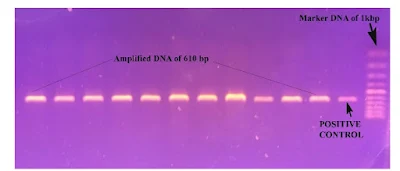WHAT IS PCR?
The polymerase chain reaction, or PCR for short, is a scientific method for quickly amplifying a specific DNA sequence into millions or billions of copies [1]. PCR selects a section of the genome to be amplified by utilizing short synthetic DNA fragments called primers. Multiple rounds of DNA synthesis are then used to amplify that segment [2]. Today, PCR is a widely used and frequently essential technology in biological and medical research labs for a wide range of applications.
DISCOVERY OF PCR
It is remarkable to consider that a technology that served as the foundation for the human genome project and is essential to many molecular biology laboratory protocols was only discovered some 40 years ago by Kary Mullis (1944-2019) who shared his Nobel Prize in Chemistry along with Michael Smith in 1993 [3].
INGREDIENTS OF PCR
A PCR needs five basic ingredients to be set up. These include the template DNA, primers (short stretches of DNA that initiate the PCR reaction), deoxyribonucleotide phosphates containing all four nitrogen bases including adenine, guanine, cytosine and thymine (collectively called as dNTPs), Taq polymerase enzyme and buffers [4].
PRINCIPLE OF PCR
Amplification is accomplished using the three principal steps. The three steps in the process are: (1) denaturation, which involves heating double-stranded DNA templates to separate the strands; (2) annealing, which involves the binding of short DNA molecules called primers to the flanking sections of the target DNA; and (3) extension, which involves DNA polymerase extending each primer's 3′ end along the template strands. To create precise copies of the target DNA exponentially, these stages are repeated (or "cycled") 25–35 times (Figure 1) [5].
Figure 1 STEPS IN PCR
APPLICATIONS
In the modern world, when many new diseases are in transitional stages of developing and re-emerging, such as COVID-19, there are many uses for PCR. In addition, scientists from all around the world are working together to reduce the incidence of some of the most terrible and deadly diseases, such as cancer. Detecting changes in gene expression caused by physiological and pathological causes quickly and accurately is one of this method's main uses as a research tool. Measurements of the viral or bacterial load or the state of malignancy are made using this method in clinical diagnostics. Numerous advancements in diagnostic pathology have been made possible by PCR, particularly in the areas of hematological, genetic illnesses, and viral infections [6]. For instance, an illustration of the amplified products that was visualized under the UV-transilluminator to detect a gene of Salmonella Typhi has been shown in the Figure 2.
For these applications, strict guidelines, high sensitivity, and consistent performance are required. As a result, heat cyclers and reagents need to meet these specifications and be designed especially for them. Molecular diagnostics encompasses several tests such as genetic analysis, identification of carcinogenic mutations, and examination for infectious agents. Amplification of distinct short tandem repeats (STRs) on genomic DNA is necessary for human identification by PCR in forensics in order to distinguish between people [7]. PCR is essential to agriculture for testing for genetically modified organisms (GMOs), detecting food pathogens, and plant genotyping for breeding [8].
In conclusion, PCR-based technologies are routinely employed in clinical diagnostics, criminal investigations, and agricultural biotechnology, in addition to basic research.
REFERENCES
- Garibyan L, Avashia N. Polymerase chain reaction. J Invest Dermatol. 2013 Mar;133(3):1-4. doi: 10.1038/jid.2013.1. PMID: 23399825; PMCID: PMC4102308.
- https://www.genome.gov/genetics-glossary/Polymerase-Chain-Reaction
- https://www.nobelprize.org/prizes/chemistry/1993/mullis/facts/
- https://www.yourgenome.org/facts/what-is-pcr-polymerase-chain-reaction/
- https://www.thermofisher.com/np/en/home/life-science/cloning/cloning-learning-center/invitrogen-school-of-molecular-biology/pcr-education/pcr-reagents-enzymes/pcr-basics.html
- DeBiasi RL, Tyler KL. Polymerase Chain Reaction in the Diagnosis and Management of Central Nervous System Infections. Arch Neurol. 1999;56(10):1215–1219. doi:10.1001/archneur.56.10.1215
- Nwawuba Stanley U, Mohammed Khadija A, Bukola AT, Omusi Precious I, Ayevbuomwan Davidson E. Forensic DNA Profiling: Autosomal Short Tandem Repeat as a Prominent Marker in Crime Investigation. Malays J Med Sci. 2020 Jul;27(4):22-35. doi: 10.21315/mjms2020.27.4.3. Epub 2020 Aug 19. PMID: 32863743; PMCID: PMC7444828.
- Arenas M, Pereira F, Oliveira M, Pinto N, Lopes AM, Gomes V, Carracedo A, Amorim A. Forensic genetics and genomics: Much more than just a human affair. PLoS Genet. 2017 Sep 21;13(9):e1006960. doi: 10.1371/journal.pgen.1006960. PMID: 28934201; PMCID: PMC5608170.
%20(1).jpeg)

No comments:
Post a Comment